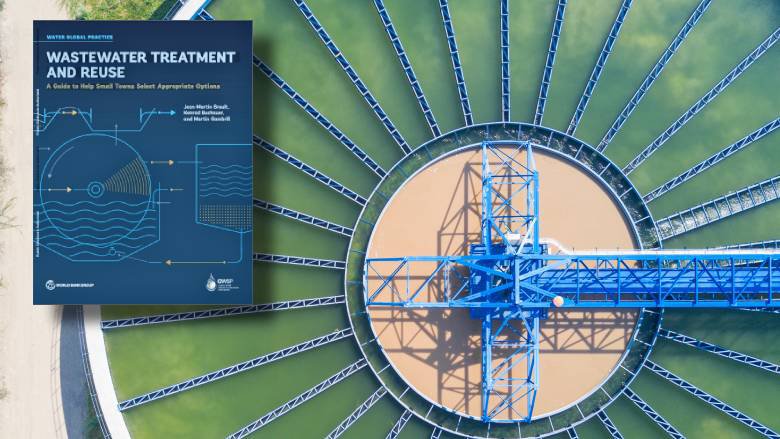Strategic Approaches to Boost Waste Water Therapy Effectiveness and Lessen Environmental Effect
In the realm of waste water treatment, the mission for enhanced efficiency and lowered environmental impact is a continuous obstacle that demands strategic solutions. As society grapples with the critical to handle water resources sustainably, a nuanced method becomes necessary. The assimilation of advanced therapy innovations, energy-efficient procedures, source recovery approaches, boosted nutrient removal techniques, and wise tracking and control systems represents a complex framework for attending to these pushing issues. What lies at the core of this facility internet of approaches is the possible to revolutionize the method we come close to waste water treatment, not just as a process of disposal, yet as a beneficial opportunity for innovation and environmental stewardship.
Advanced Treatment Technologies
Cutting-edge membrane filtering systems have actually changed innovative wastewater therapy processes, dramatically boosting the elimination of contaminants. This modern technology has verified to be extremely effective in eliminating a broad variety of pollutants, consisting of pharmaceuticals, heavy steels, and organic compounds, which are typically challenging to remove via traditional treatment methods.
Moreover, membrane layer filtering systems offer countless benefits over conventional therapy methods. In addition, these systems are very flexible and can be easily incorporated into existing therapy plants or made use of as standalone systems for decentralized applications.
Energy-Efficient Procedures
The assimilation of energy-efficient procedures in wastewater therapy systems is critical for enhancing source application and reducing operational expenses. One crucial approach to improving energy effectiveness in wastewater therapy is the application of advanced oygenation systems, such as fine bubble diffusers or surface aerators, which can improve oxygen transfer effectiveness and decrease power intake.
In addition, optimizing process control and automation via making use of innovative sensing units and monitoring systems can enhance overall energy effectiveness by readjusting procedures in real-time based upon actual demand and conditions. Carrying out energy audits and regularly keeping track of energy performance signs are crucial techniques to recognize areas for enhancement and track energy-saving campaigns effectively. On the whole, the fostering of energy-efficient procedures in wastewater treatment not just profits the atmosphere however likewise contributes to long-term expense financial savings and operational sustainability.
Resource Recuperation Methods
With an emphasis on maximizing source use and sustainability in wastewater treatment systems, the application of source recovery approaches becomes an essential element in enhancing operational performance. Resource recovery approaches in wastewater therapy include the identification and removal of useful resources from the waste stream, therefore turning what was when thought about waste right into a useful asset. By implementing source recuperation techniques such as nutrient elimination and healing, power generation from raw material, and the manufacturing of recyclable water, wastewater therapy plants can lessen environmental effect while making the most of performance.

Enhanced Nutrient Elimination Strategies
Applying sophisticated nutrient elimination strategies is vital for optimizing the effectiveness of wastewater treatment systems. One of the crucial strategies utilized for enhanced nutrient removal is the process of biological nutrient elimination (BNR), which entails the removal of nitrogen and phosphorus via biological procedures.

In enhancement to BNR, advanced therapy approaches such as membrane layer bioreactors (MBRs) and built marshes can likewise be employed to improve nutrient elimination effectiveness. By integrating these sophisticated nutrient removal strategies right into wastewater therapy systems, districts and markets can properly lower nutrient contamination and secure the environment.
Smart Monitoring and Control Equipment
Making use of innovative modern technology, the assimilation of clever surveillance and control systems revolutionizes the operational effectiveness of wastewater treatment centers. These systems integrate advanced sensors and data analytics to continually keep an eye on essential parameters such as pH degrees, turbidity, dissolved oxygen, and flow prices in real-time. By collecting and analyzing this information, operators can gain valuable understandings into the efficiency of the treatment procedures, allowing proactive changes to enhance therapy effectiveness.
Smart surveillance and control systems likewise support remote tracking capabilities, permitting operators to gain access to real-time information and control functions from off-site locations. This remote access improves functional flexibility and responsiveness, allowing quick interventions in instance of system malfunctions or changes in influent top quality. The anticipating upkeep capabilities of these systems assist protect against equipment failures and lessen downtime, ultimately boosting the general dependability of wastewater therapy procedures.
Conclusion
To conclude, tactical approaches such as innovative treatment modern technologies, energy-efficient procedures, source healing methods, boosted nutrient elimination techniques, and smart tracking and control systems play an important duty in improving wastewater therapy effectiveness and decreasing environmental effect. By carrying out these strategies, wastewater therapy plants can boost their general performance, decrease energy usage, recoup valuable resources, and guarantee conformity with environmental policies. These techniques are important for lasting and effective wastewater management methods.

In final thought, tactical approaches such as innovative therapy modern technologies, energy-efficient procedures, source recovery techniques, boosted nutrient try this removal strategies, and smart tracking and control systems play a crucial duty in enhancing wastewater treatment performance and minimizing environmental effect.